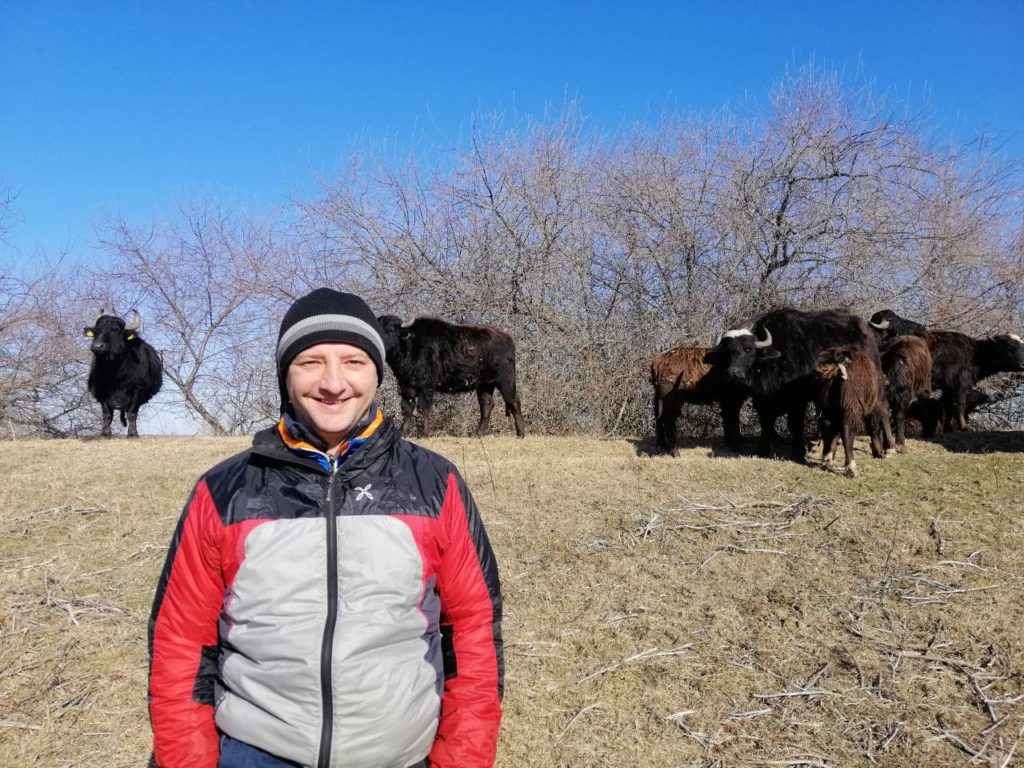Mykhailo Nesterenko, a biologist and leader of the rewilding team in Ukraine, explains what rewilding is, what this new approach can give to the nature and people of the Danube Delta, and what challenges and hopes the Ukrainian team faces. He also shares some of his own background and what rewilding means for him personally.
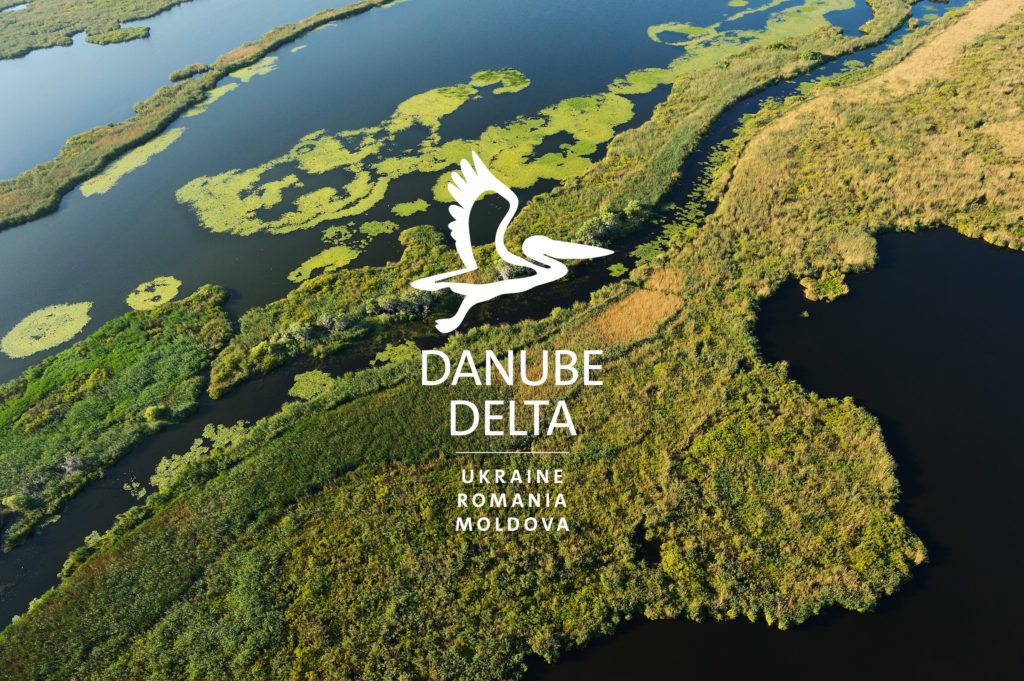
Rewilding, by and large, means allowing nature to look after itself.
In recent decades we have become used to the idea that nature should be managed by humans. In a forest, we expect a forester to look after it. If we see a water body, we expect a water manager to control it. If there are fish in this water, they must have been introduced by fishermen or private companies for angling. If we see a meadow with grass, we suspect that someone is mowing this meadow, because if it isn’t mowed, weeds and shrubs will develop and the meadow will gradually disappear. We believe that the nature that we see cannot exist without us and are used to such idea.
It turns out that this is not entirely true. If we ask elderly people what the Danube Delta once looked like – before such the large-scale transformation of nature – they will tell you that the delta was a diverse and interesting ecosystem. The large lakes along the River Danube contained a huge amount of fish; we can only read with envy the statistical reports on fish catches from the 60s. They can tell us about the sweeping meadows of the Danube Delta, where huge numbers of birds found shelter and fish spawned. We will learn that there were huge riverine forests in the delta, in which eagles nested, and deer, wild cats and many other mammals made their home. In due course, a reasonable question arises: how did all this nature exist without us and our active participation? Rewilding, in essence, means revitalizing those mechanisms and tools which supported the existence of the Danube Delta so well, without human interference, in the past.
Rewilding in practice
Water bodies along the Danube have always been connected to the river itself – huge lakes with good wide connections. Fish freely entered the lakes from the Danube for spawning, and in the autumn after feeding, when the water temperature in the lakes dropped, they would freely go back into the river. I remember from my childhood, when the lakes had not long been modified, you could go with a fishing rod to the shore of Lake Kartal and catch a bucket of fish in a few hours. Moreover, there was a wide range of different fish: not only crucian carp or common bleak, but also perch, tench, golden carp – a great variety, and no one had introduced them. The fish entered the lakes and left freely, and this whole system supported itself. Decades later, after 40 or 50 years of lakes being surrounded by dykes, these processes have been severely disrupted. We have to stock our water bodies with fish species that are actually exotic (for example, from the Far East). The entire ecosystem has been degraded. This is why it is essential to restore the connection between the lakes and the Danube, to restore spawning grounds and the natural spawning process.
When it comes to rivers, a burgeoning new movement has arisen to remove unnecessary dams and weirs. The EU has even put forward a specific goal – to restore 25,000 kilometres of river networks by removing unnecessary dams. This is done to restore the quality of water in the rivers, return spawning and migration of fish that cannot overcome dams, which revives the local economy.
This is rewilding in its purest form – to return space to rivers and aquatic organisms to freely migrate to rivers.
There are already the first examples in Ukraine. Last year, in partnership with the Danube Biosphere Reserve, we removed or cleared 10 dams and obstacles on the Kogilnik, Kagach and Sarata Rivers in the upper part of the Sasyk Lagoon. Also, in the north of the Odessa region, a project is being prepared to demolish several dams on the Yagorlyk River. Moreover, this project was initiated by local communities to improve the quality of water in the river.
The restoration of the steppes is another important task. Today in Europe only 2% of former steppe landscapes remain. These steppes are the natural ancestors of our chernozems, and our famous chernozems are a product of the steppes. The most fertile soils in the world, of course, they were almost completely developed by agriculture, and the animals that inhabited them simply disappeared. As recently as 200 years ago, kulan and saiga roamed free on the Bessarabian Steppe. Now only a few specialists know about this. People have already forgotten about those times. Our task is to try to restore the steppes and return the steppe animals. The experience of Askania-Nova has shown that the steppe is degenerating without herbivores. That is why we brought kulan to the Tarutino Steppe, and we hope that they will reestablish there.
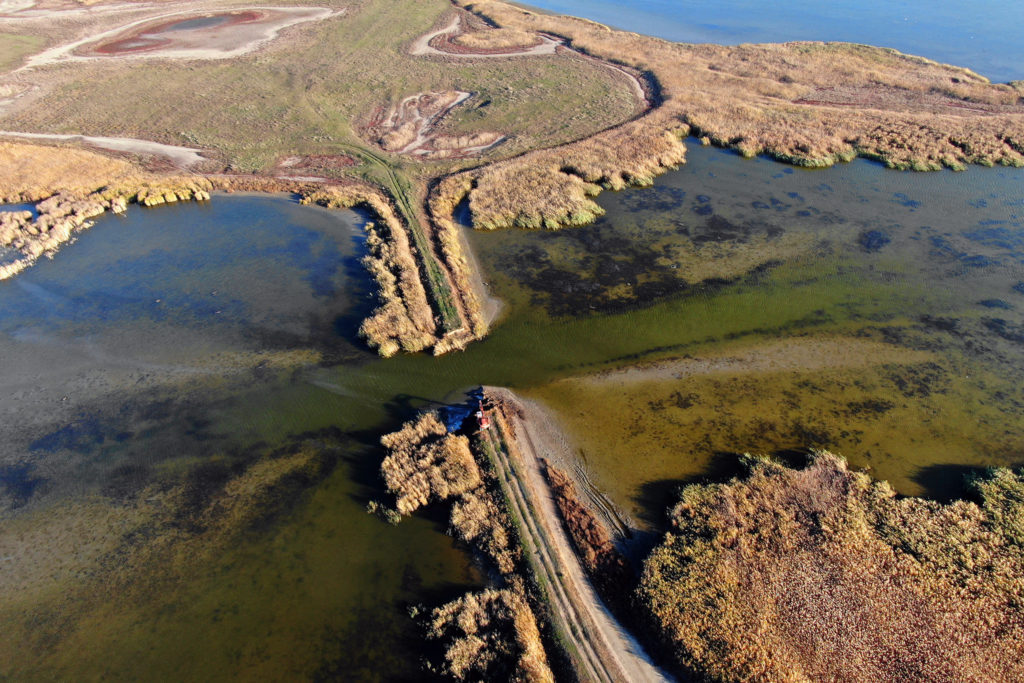
The role of large herbivores in rewilding
In Soviet times agriculture was more extensive; around each village we see ruined farms, in which cattle were once kept, freely grazing on flooded meadows and pastures, which served as spawning grounds for fish. This stopped in the 90s. Now we don’t see large wild animals in the Danube Delta any more, and there are so few cattle left that you can count them on one hand. So, we removed those animals from nature that supported the meadows.
Our task now, within the framework of rewilding, is to return large animals and the role they play in the ecosystem.
We understand that many of them have become extinct, so we are now using closely related species and breeds. For example, near Izmail in the Izmail Islands Regional Landscape Park, within the framework of the WWF project, we have introduced Ukrainian grey cattle. These bovines, which are able to survive in nature on their own, have been perfectly supporting the meadows for 10 years, where fish spawn and “Red Data Book” plant species grow. And on neighbouring islands, where there is no cattle, we see shrubs proliferating, biodiversity decreasing and the entire ecosystem degrading.
We also see that if we remove large herbivores from the forest, based on the experience of the Tataru Island, the forest gradually becomes overgrown with shrubs and transforms into an impenetrable jungle where there is no reforestation. It turns out that large herbivores support the forest. There is a new modern word – natural forest. In our region it is not even a forest, or a forest-steppe, but a grass forest. Thus, the number of meadows in the delta forest should be much bigger than in the forest we are used to. In our conditions, the forest should be more open. And large herbivores can help us to keep the forest in such an open state. We need these animals so that humans – manually or with the help of technology and timber harvesting – don’t have to maintain these forests in some normal or close to natural state. Large animals will do it for us, as they have done for hundreds and thousands of years before the active transformation of the Danube Delta by man.
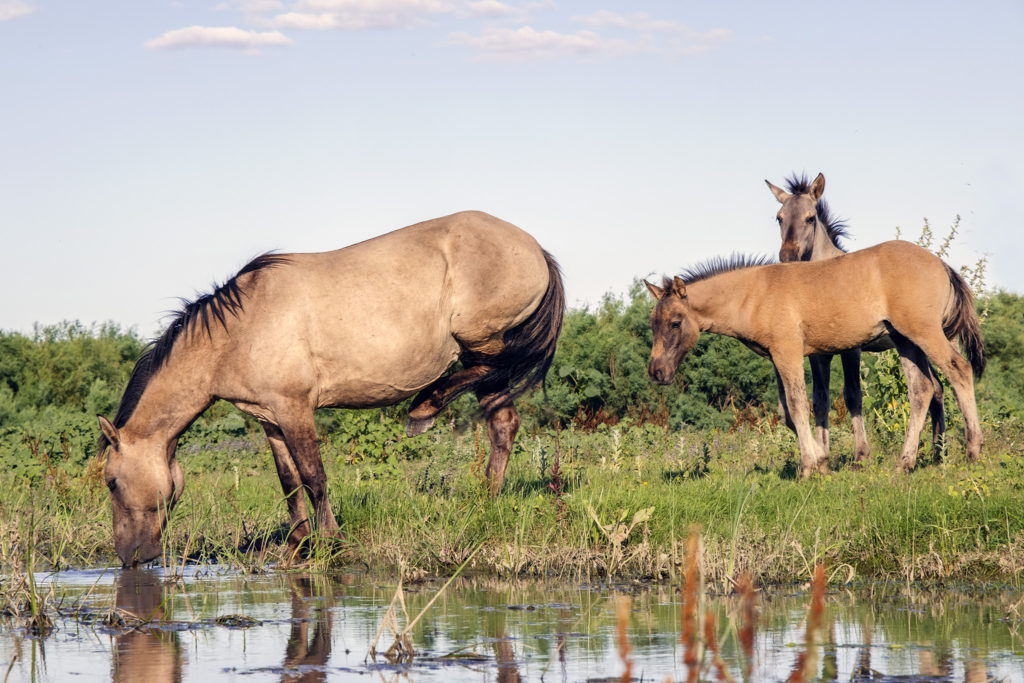
Rewilding gives hope to nature and people
We understand very well that for such an intensive management of nature by man, as has happened in recent decades, we are short of funds or opportunities. We can no longer mow meadows on a huge scale, keep large numbers of cattle, and stock water bodies with fish. In addition, the number of people living in settlements along the Danube – just like rural populations elsewhere in Europe – is declining; young people are leaving for cities.
The only way out is clear – to return natural processes, to hand over the reins of government to nature. Then we will be seeing lakes return to their natural state in the Danube Delta. In half a day, without restocking, we will be able to catch half a bucket of fish. We will be able to visit the islands or the outer Delta and see large herbivores, such as roe deer, existing on their own. These deer live even in the Dnieper Delta, although few people know about them. But in the Danube Delta, unfortunately, it has disappeared as a result of hunting. We should see large cows or buffaloes, which we recently settled on the Ermakov Island as an experiment. Water buffaloes are a substitute of the aurochs – large ancestors of cows, long extinct due to the hunting of prehistoric people who once lived here. We fish out the skeletons and skulls of these animals from the rivers, especially often a large amount of fossil of these animals are found in the Dnieper River. They once inhabited all of our river valleys and played the role of maintaining the forests, meadows and ecosystems of these rivers.

Nature loves variety
We understand that part of the ecosystem – for example, large animals – has already been removed from it. New species such as the golden jackal also appear. We know that some time ago there were large animals, there were also predators that hunted these animals. The wolf was probably widespread in the Danube Delta. Now the wolf is practically gone, there are no large predators, and a jackal has come to replace them. Many people think that this is an exotic species, but in fact, it came by itself – it was not brought here by people. The animal just filled the gap that was free. It is very important not only to return some individual species to the ecosystems, but all that completeness, the entire spectrum of species, from small animals to large ones. Large herbivores should return to the Danube Delta – we also want to introduce deer, kulan, and use primitive types of cattle to act as substitutes for the auroch. We should, perhaps, try to return the beaver, and we should support small predators, for example by improve conditions for wildcats. We also need to reintroduce birds of prey, such as the eagle owl, which in recent years we have been attempting to return to the delta together with the Odessa Zoo and the Danube Biosphere Reserve. It is necessary to consider the whole range of species that should make up an integral ecosystem.
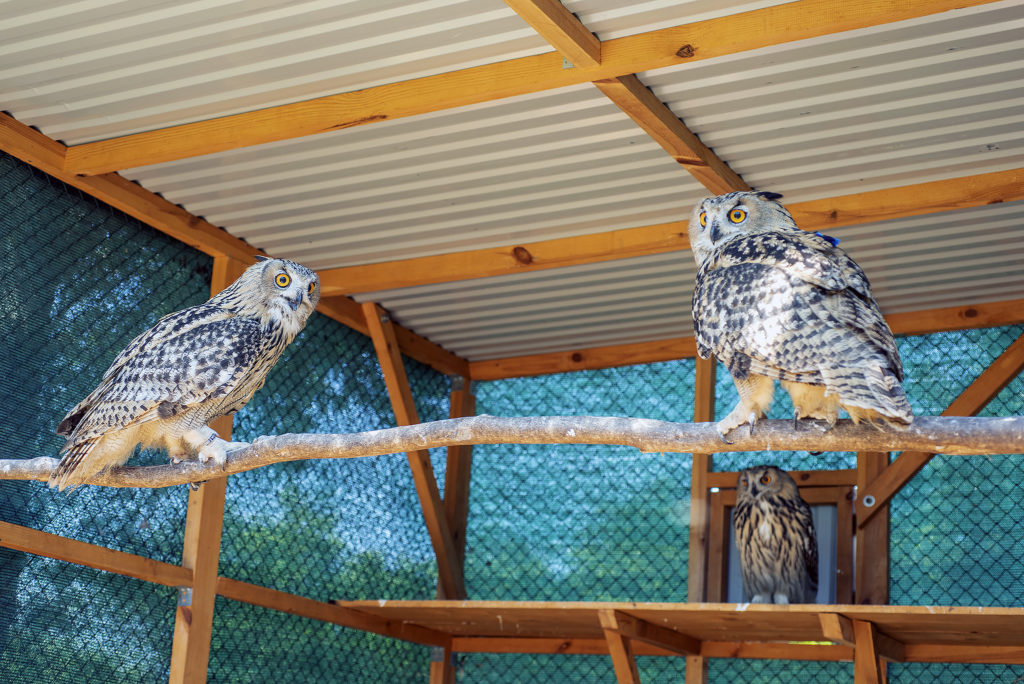
Rewilding supports the economy
Again, let’s remember how the Danube lakes looked before: they were much more interesting, the fish catches in these water bodies in their natural state were much bigger than what we have now, and their water levels were more or less stable. What does this mean in practice? Yes, indeed, in eight out of ten years, these water bodies will have excellent catches and good water quality. The remaining two years in a decade, these lakes can dry out very much or, on the contrary, overflow with water. Of course, this is not easy to do now: somewhere the infrastructure has entered the flood zones, for some people a drought may seem like a disaster, but a drought is the same natural phenomenon as a flood. Without drought and periodic severe floods, the ecosystem dies. Drought, it turns out, decomposes all organic matter, everything that is born in this water body, all vegetation falls to the bottom. If it does not periodically dry out and mineralize through natural processes, the lake gradually become shallow, clogged with this dead plant residue, and we will not be able to bring it back to life by no means other than an excavator. These are the same problems that we have already observed on some lakes in the Danube Delta.
It is impossible to preserve nature without economics.
We need to learn how to make money from nature without destroying it. The income from tourists who come to see free-roaming deer or wild asses should be much higher than the income from hunting them. And part of the income should remain in the local community – then local people will be interested in nature conservation.
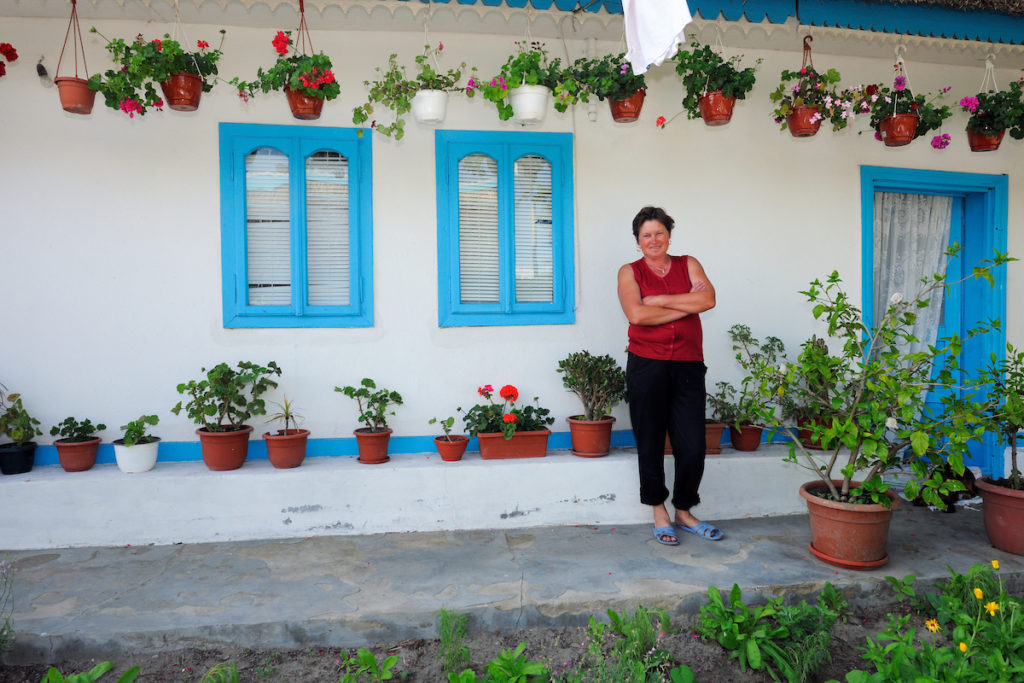
What is rewilding for me?
Nature has interested me since childhood. I attended a club of young naturalists, went on expeditions, learned about the beauty and complexity of nature. After school I entered the Faculty of Biology and chose the Department of Zoology, with a specialization ornithology – the science of birds. Since my university days I have continued to be interested in birds and, like any good birdwatcher, I keep a list of species found in nature. There are already 750 species on it, and it continues to grow.
I always wanted to protect the nature of the planet, because only when I’m out in nature do I feel all the joy and fullness of life. When I saw a vacancy at the WWF office in Odessa back in 1998, I couldn’t pass up the opportunity. Since then, for over 20 years, I have been working in the field of nature conservation – mainly in the Danube Delta. As part of WWF projects, I have worked with local partners to implement many bold ideas – the restoration of the Small Tataru and Ermakov islands, natural grazing on the Izmail Islands and adaptation of nature and people of the delta to climate change. But there is still a lot more work to be done.
In 2016 I joined the team of Rewilding Europe. I really like the philosophy of rewilding. It is very organic, beautiful, and also very practical. For me, rewilding is an opportunity to do something new that can be seen and touched. It’s not just writing a report, or posting something on social media, but restoring nature in its beauty and completeness.
